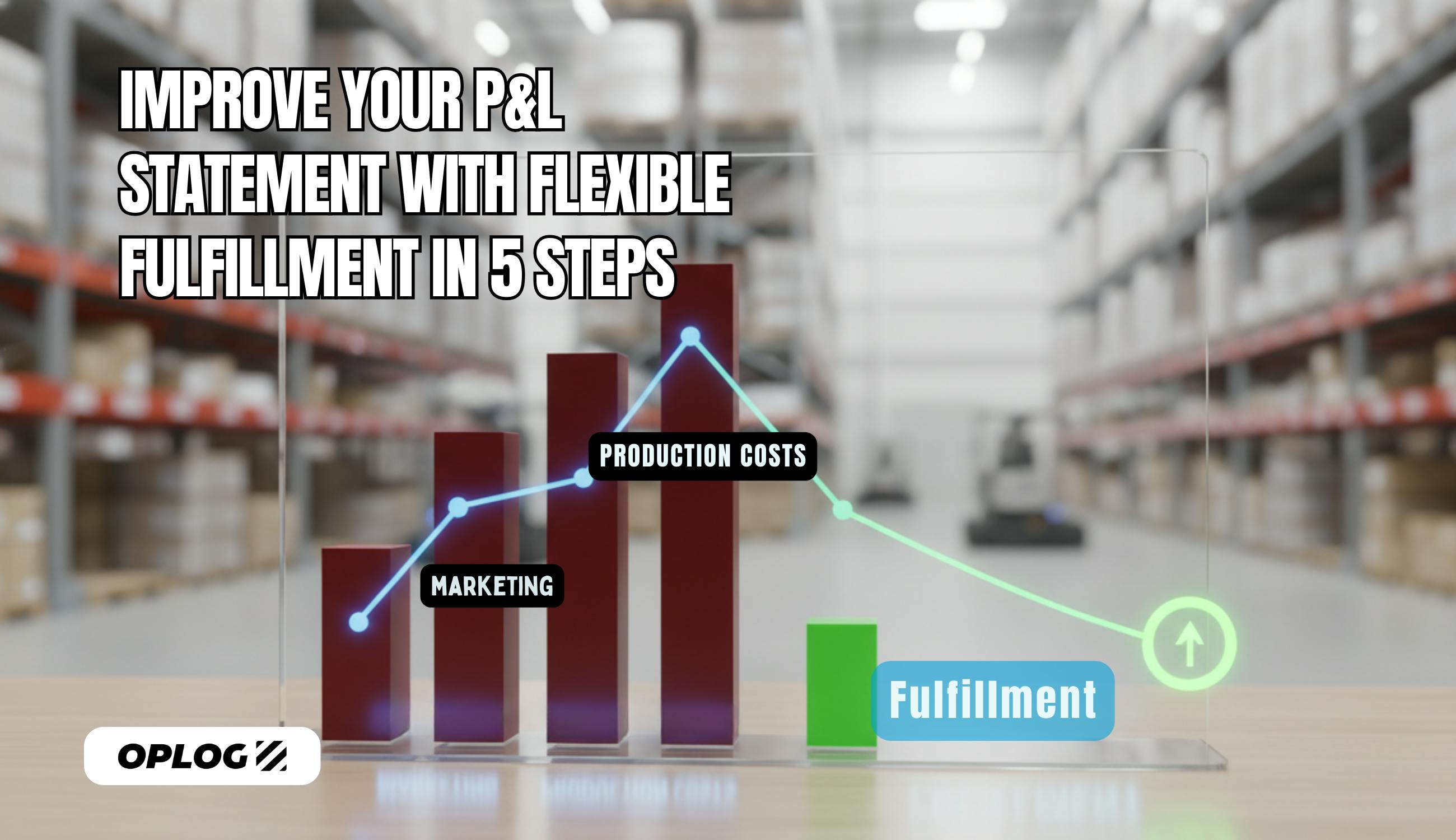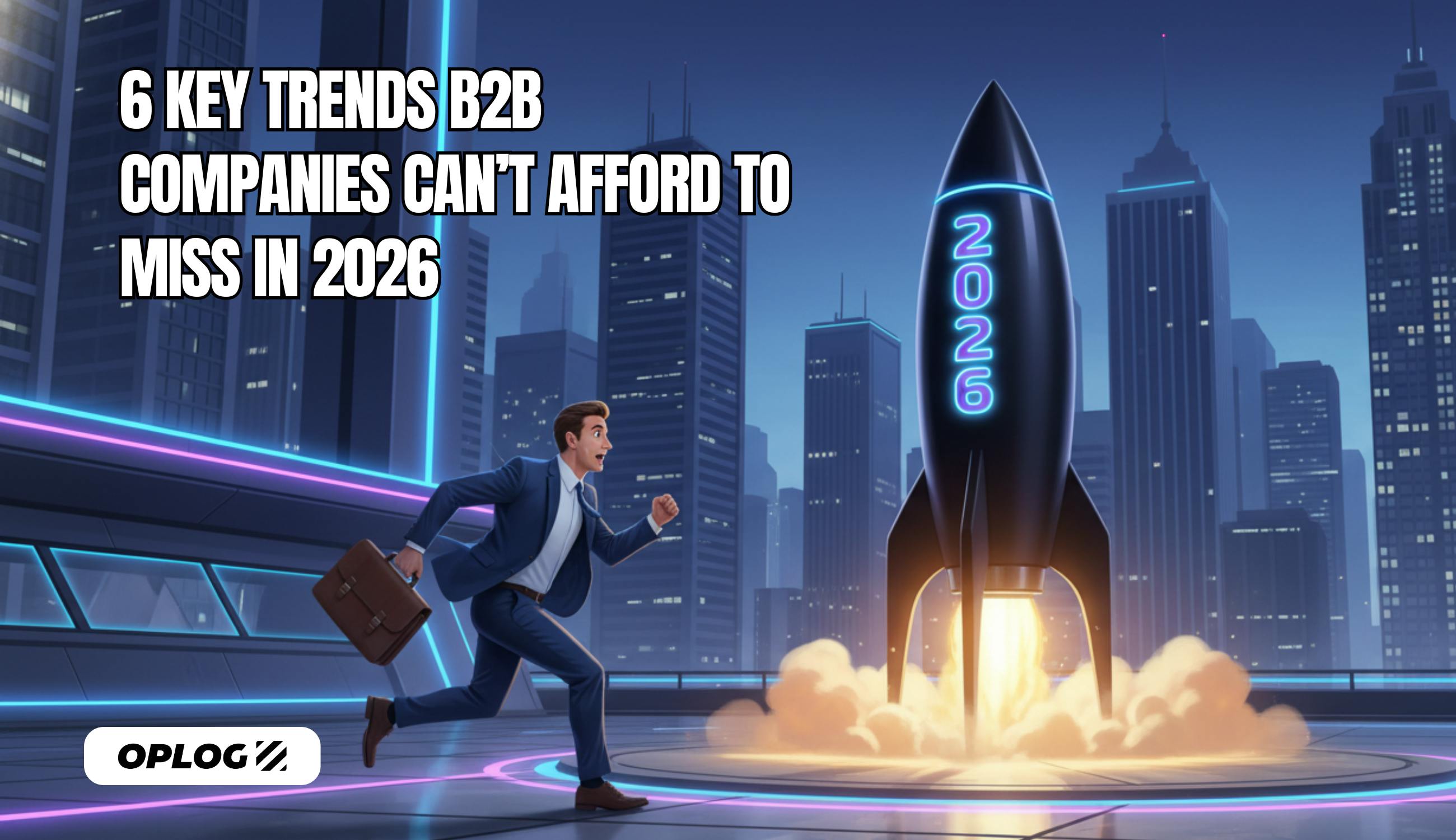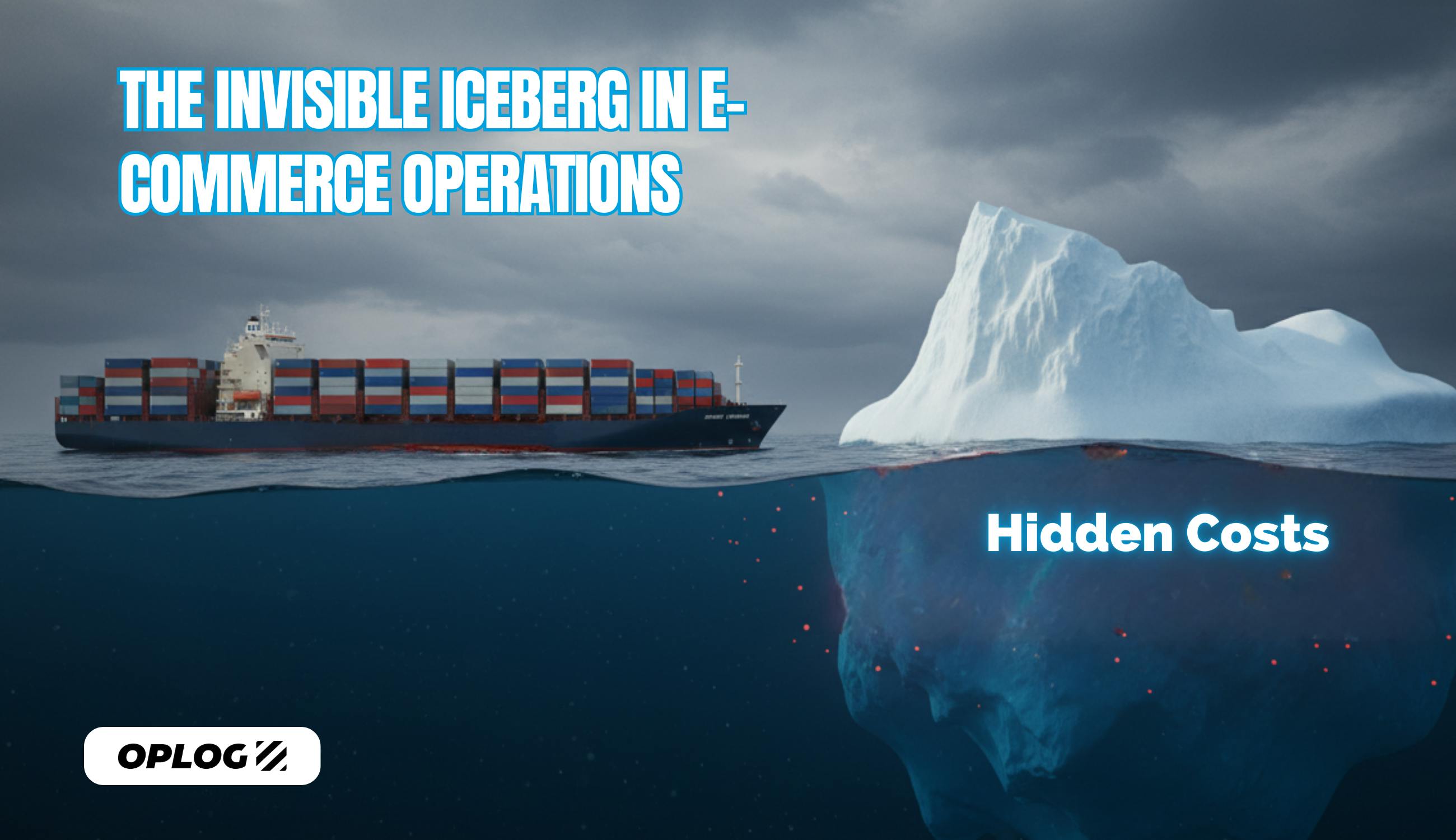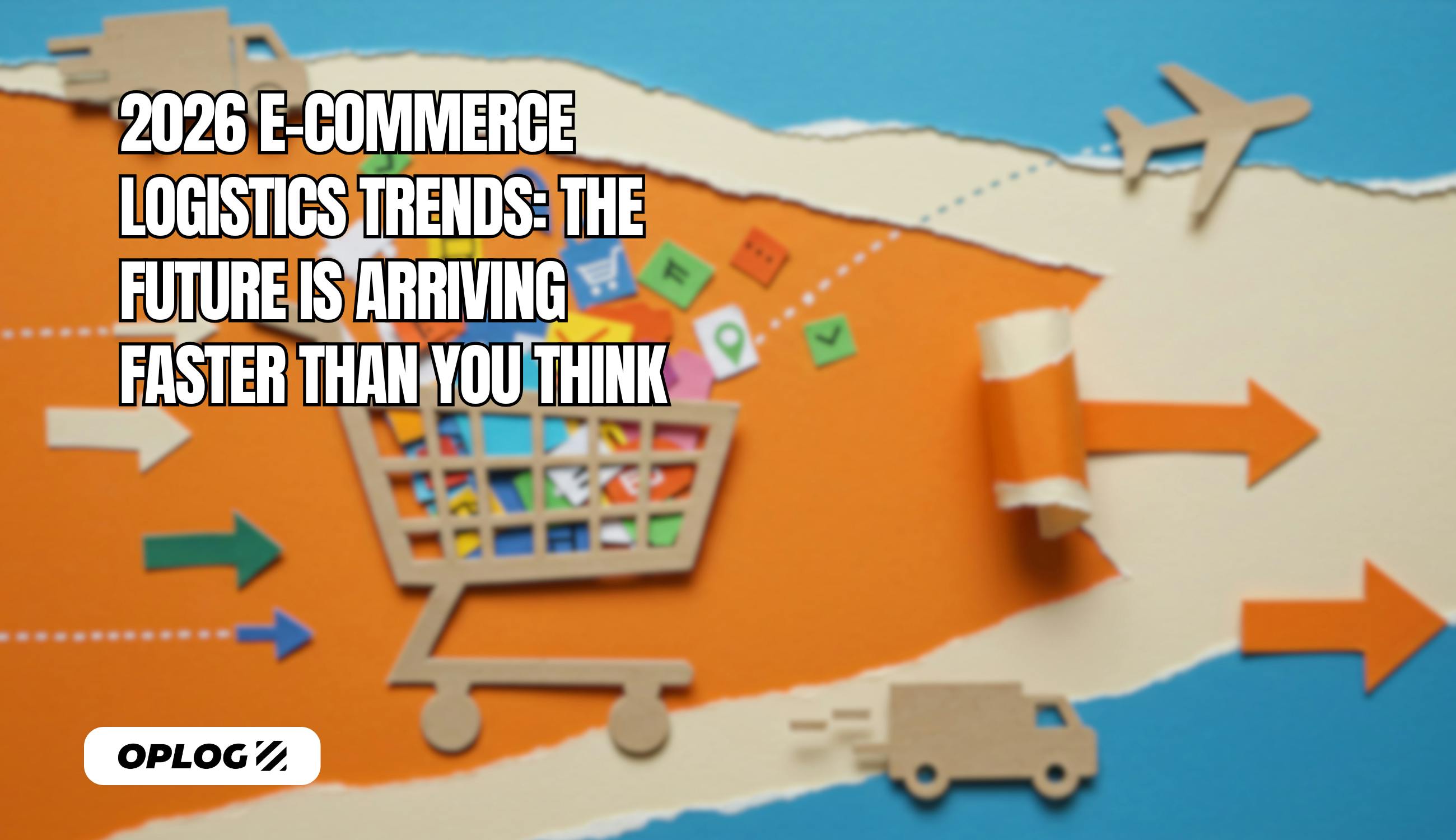The European e-commerce opportunity is massive—over €500 billion and growing at double-digit rates annually. Yet for international brands, particularly those from the US, Asia, and other global markets, entering Europe remains frustratingly complex. Post-Brexit regulations have fundamentally split UK and EU operations into separate entities. German consumers demand precision and quality that can shock unprepared brands, while UK shoppers expect next-day delivery as a basic right. Meanwhile, traditional logistics providers still operate with rigid contracts, minimum commitments, and legacy systems designed for a pre-digital world.
Modern fulfillment centers are revolutionizing this reality. By combining robotics powered, genuinely flexible pay-as-you-go pricing models, and strategic locations in both UK and Germany, they're enabling international brands to access European consumers without the traditional barriers of massive capital investment, suffocating long-term commitments, or overwhelming operational complexity that has historically kept promising brands locked out of European markets.
Why European Fulfillment Centers Matter More Than Ever
Direct shipping from your home market to European customers simply doesn't work in today's competitive landscape. When UK consumers see "Delivery: 10-14 days, Shipping: £35," they don't just abandon their carts—they often never return to your brand. German shoppers, known for their methodical purchasing behavior, expect precise delivery windows and absolutely perfect packaging. With return rates approaching 30% for online fashion and even higher for certain categories, customers need local return addresses and fast refund processing. Every single day you continue shipping internationally instead of locally, you're hemorrhaging sales to competitors with European fulfillment capabilities.
The numbers tell a stark story: conversion rates for international shipping typically sit below 1%, while local fulfillment can achieve 3-5% conversion. Customer lifetime value drops by 40% when delivery takes over a week. Cart abandonment rates exceed 75% when shipping costs surpass €10. These aren't just statistics—they represent millions in lost revenue for brands that could otherwise succeed in Europe.
The traditional alternative—setting up your own European operations—requires massive investment and specialized expertise that most international brands simply don't possess. Multi-year warehouse leases demand upfront capital. Local hiring means navigating complex European employment law. Technology integration requires understanding of local systems and standards. Regulatory compliance involves mastering VAT schemes, customs procedures, and country-specific requirements. Managing separate systems for UK versus EU markets doubles the complexity. Many ambitious brands spend 12-18 months just planning European entry, burning through budgets on consultants and feasibility studies, only to discover their carefully crafted strategies crumble when faced with operational reality.
Modern fulfillment centers offer a revolutionary third path: operational infrastructure as a service. No capital investment beyond inventory. No fixed commitments that constrain flexibility. No hiring headaches or employment law complexity. No technology development or integration nightmares. You can be fully operational in weeks, not months or years, with the ability to scale instantly based on actual demand rather than optimistic projections that rarely match reality.
The UK Opportunity: Speed, Scale, and Sophistication
Despite Brexit complications that dominate headlines, the UK remains Europe's most valuable e-commerce market—£147 billion annually with 87% internet penetration and average online spending exceeding £3,000 per capita. UK consumers have fully embraced online shopping in ways that even their European neighbors haven't matched. They buy everything from groceries to furniture digitally, often from their phones while commuting. They're remarkably comfortable with international brands and consistently rank among the world's most eager early adopters of new products and services.
But UK consumers are also extraordinarily demanding, shaped by years of Amazon Prime membership and exposure to world-class retail. Amazon Prime has trained an entire nation to expect next-day delivery as an absolute standard, preferably free, with precise tracking and proactive communication. Returns must be simple, free, and fast—many UK consumers deliberately over-order with the intention of returning items. Packaging should be Instagram-worthy, sustainable, and appropriate to the product value. These expectations seem impossible for international brands to meet—until you understand how modern UK fulfillment centers actually operate.
Strategic location becomes everything in UK fulfillment. A single optimally-positioned fulfillment center in the Midlands can reach 84% of the UK population with next-day ground delivery, a geographic advantage that's nearly impossible to replicate elsewhere. Compare this to the US, where you need at least five facilities for similar coverage, or even Germany where population distribution requires multiple locations. This concentration enables exceptional service levels at remarkably efficient costs.
Advanced robotics handle the overwhelming complexity of peak seasons—processing orders with 99.9% accuracy even when volumes spike 10x during Black Friday, Christmas, or summer sales. These aren't simple conveyor systems but sophisticated AI-powered robots that learn and improve with every order processed. During the 2024 Black Friday weekend, leading UK fulfillment centers processed millions of orders with better accuracy than their normal rates, defying traditional operations logic.
The technology infrastructure in UK fulfillment centers has evolved specifically for modern e-commerce. Integration with platforms like Shopify, BigCommerce, and WooCommerce happens in hours, not the weeks or months traditional providers require. Real-time inventory synchronization prevents the overselling that damages customer relationships. Multi-carrier orchestration ensures optimal delivery options—automatically selecting between Royal Mail, DPD, Evri, Yodel, and others based on service requirements and cost optimization. Returns processing happens within 24-48 hours, maintaining customer satisfaction while minimizing inventory lock-up that constrains cash flow.
Post-Brexit, the UK has actually become simpler for non-EU brands to enter, an unexpected silver lining to the political upheaval. You're no longer navigating 27 different sets of regulations within the EU framework, each with local nuances and requirements. UK VAT registration is remarkably straightforward compared to EU processes. The new UK Global Tariff regime has eliminated duties on many products that still face tariffs in the EU, creating cost advantages for certain categories. Import processes, once you understand them, are consistent and predictable without the complexity of EU customs unions.
Germany: Your Gateway to 500 Million EU Consumers
Germany represents both Europe's largest economy and its undisputed logistics hub, a combination that makes it indispensable for serious European expansion. A strategically located fulfillment center in Germany doesn't just serve 83 million German consumers—it provides seamless access to the entire EU single market through the continent's most sophisticated ground transportation networks.
German consumers approach online shopping with characteristic thoroughness that can initially frustrate but ultimately rewards brands that meet their standards. They expect detailed product information, comprehensive specifications, and multiple product images from every angle. They demand precise delivery windows and absolutely pristine packaging. If you promise Tuesday delivery between 2-4 PM, it must arrive exactly then—not Monday (too early is as problematic as too late), not Tuesday at 5 PM (close doesn't count in Germany). This precision isn't cultural pickiness; it's cultural DNA that influences everything from train schedules to manufacturing standards, and brands that respect it earn fierce loyalty.
Modern German fulfillment centers have evolved sophisticated systems specifically to meet these exacting expectations. Climate-controlled zones maintain perfect conditions for cosmetics, supplements, and sensitive electronics. Advanced packaging systems ensure products arrive undamaged—a dented box that might be acceptable elsewhere triggers returns in Germany. Multiple payment methods are supported, crucially including the popular "invoice payment" (Rechnung) where Germans receive and inspect products before paying, a trust-based system that seems risky but actually reduces return rates.
The strategic advantage of German fulfillment extends like spokes throughout Europe. From Germany, you can reach France's 65 million consumers in 1-2 days using established trucking routes. The Netherlands and Belgium, with their high e-commerce penetration, receive next-day delivery as standard. Austria and Switzerland, the remainder of the DACH region, are served within 48 hours. Even growing Eastern European markets like Poland and Czech Republic are accessible in 2-3 days. Once products clear customs into Germany, they move freely throughout the EU without additional procedures, documentation, or delays—a massive advantage over UK-based fulfillment post-Brexit.
Environmental consciousness profoundly influences German operations in ways that impact every aspect of fulfillment. Sustainable packaging isn't optional—it's expected by consumers and increasingly mandated by regulations. Modern fulfillment centers offer comprehensive recyclable materials, minimal packaging options that reduce waste, and carbon-neutral shipping that appeals to climate-conscious consumers. These capabilities help brands meet stringent German environmental standards while building credibility with eco-conscious consumers across Europe. The German Packaging Act (Verpackungsgesetz) requires detailed reporting and participation in recycling systems—complexity that modern fulfillment centers handle automatically.
The German workforce brings unique advantages to fulfillment operations. The country's apprenticeship culture produces highly skilled logistics workers. The engineering mindset drives continuous improvement. The cultural emphasis on precision reduces errors. Workers take pride in operational excellence, treating fulfillment as a craft rather than mere labor. This human element, combined with advanced robotics, creates unmatched operational quality.
The Robotics Revolution Transforming Fulfillment
Modern fulfillment centers bear virtually no resemblance to traditional warehouses, having transformed from storage facilities to sophisticated technology platforms powered by next-generation robotics like TARQAN. These AI-native robotics systems represent a quantum leap beyond basic automation—TARQAN robots don't just move products; they think, learn, and continuously optimize operations in ways that seemed like science fiction just years ago.
TARQAN's Autonomous Mobile Robots (AMRs) glide silently across vast floors, navigating dynamically rather than following fixed paths like older automated guided vehicles. Unlike generic robotics solutions that simply execute pre-programmed tasks, TARQAN robots use advanced LIDAR, computer vision cameras, and proprietary algorithms to create real-time 3D maps of their environment. They make intelligent decisions about routing while seamlessly avoiding obstacles—including humans and other robots—all while learning from every movement to optimize future paths.
The TARQAN system's AI-powered picking capabilities achieve 99.9% accuracy while processing orders 40% faster than manual operations, statistics that seemed impossible just five years ago. TARQAN's computer vision systems identify products without barcodes, reading items like humans but with perfect consistency. The proprietary machine learning algorithms optimize every movement, learning from millions of pick patterns to continuously improve efficiency. What makes TARQAN unique is that the entire fleet shares knowledge—an optimization discovered by one robot immediately benefits all robots in the network. The system literally gets smarter with every order processed.
But the real innovation in TARQAN isn't individual robots—it's the intelligent orchestration layer that coordinates everything. When a Manchester customer clicks "buy" at 2:47 PM, TARQAN's integrated order management system instantly communicates with the warehouse management system. The AI determines the optimal picking strategy within milliseconds, considering factors like product location, robot availability, order priority, carrier cutoff times, and even weather conditions affecting delivery routes. By 2:48, TARQAN robots are already in motion, navigating optimized paths to retrieve products. By 3:15, less than 30 minutes after order placement, the package is picked, packed, quality-checked, sorted, labeled, and ready for the delivery vehicle. The customer receives notification: "Your order has shipped and will arrive tomorrow by 1 PM."
TARQAN technology scales effortlessly in ways human-dependent operations never could. The robots don't need overtime pay during peak seasons when volumes explode. They don't make more errors when working faster or handling increased volume. They don't require training when new products arrive or processes change. Most importantly, TARQAN robots work harmoniously alongside humans who handle tasks requiring judgment, creativity, and care—adding handwritten thank-you notes, ensuring premium packaging presentation, managing exceptions that require problem-solving, and providing the human touch that builds brand loyalty. This human-robot collaboration that TARQAN enables delivers both operational efficiency and customer delight.
The learning capabilities embedded in TARQAN's robotics platform extend far beyond simple task automation. These systems identify macro patterns that optimize entire workflows. TARQAN discovers that certain products are frequently ordered together and should be stored adjacently. The system recognizes that specific picking sequences reduce congestion during shift changes. It learns that particular packaging combinations minimize damage for certain product types. TARQAN's continuous learning means fulfillment centers literally improve every single day without human intervention, creating a competitive advantage that compounds over time.
What sets TARQAN apart from other robotics solutions is its purpose-built design for e-commerce fulfillment. While competitors adapt industrial robots to fulfillment tasks, TARQAN was engineered from the ground up for the unique challenges of modern e-commerce—handling millions of SKUs, managing extreme seasonality, processing both single-item and multi-item orders efficiently, and adapting to constantly changing product mixes. This specialized focus enables TARQAN to deliver performance improvements that generic robotics platforms simply cannot match.
The Pay-As-You-Go Revolution Reshaping Fulfillment Economics
Traditional fulfillment contracts lock brands into rigid commitments that constrain growth and punish volatility—minimum monthly fees ranging from €5,000 to €50,000 regardless of actual activity, fixed warehouse space allocations whether inventory fills them or not, ironclad 1-3 year terms with severe penalties for changes or early termination, and complex fee structures with hidden charges that make true costs impossible to predict. For growing or seasonal businesses, these contracts become straitjackets that limit flexibility precisely when agility is most needed.
True pay-as-you-go (PAYG) pricing eliminates these constraints entirely, fundamentally realigning costs with business activity. You pay only for what you actually use: receiving at €0.30-0.50 per unit, storage at €0.15-0.25 per item monthly, and order fulfillment at €1.50-2.50 per shipment. No minimums that force payment for unused services. No commitments that lock you into unsuitable arrangements. No contracts that lawyers need to review. If you ship 10,000 orders in December's holiday rush and 1,000 in January's inevitable slowdown, you pay accordingly. Your fulfillment costs naturally align with your revenue patterns.
The customer-agnostic model amplifies these benefits by creating a shared economy for fulfillment infrastructure. Instead of dedicated space sitting empty during slow periods while you still pay for it, resources dynamically allocate based on actual demand across all clients. All brands share robots, workers, technology, and infrastructure, but maintain complete separation of inventory and operations. Your products never mix with others, your data remains completely confidential, but you benefit from the economies of scale. This shared economy approach reduces costs while actually improving service levels through better resource utilization.
Consider the real mathematics: A fashion brand with typical seasonality might pay €10,000 monthly in traditional minimum fees, totaling €120,000 annually regardless of activity. Under PAYG pricing with no minimums, the same brand shipping 42,000 orders annually pays only €147,000 total—but this includes all services with no hidden fees. The savings of €57,000 represent a 28% reduction, but the real advantage is cash flow alignment. When sales are slow, costs are low, preserving capital. When sales boom, you have the margin to support higher fulfillment costs.
For international brands testing European markets, PAYG eliminates the risk that keeps many from even trying. Start with just your core SKUs to test market fit. Scale gradually based on actual demand rather than projections. Adjust instantly to market feedback without penalty. If a market doesn't work—and not every market will—simply stop shipping without exit fees, contract penalties, or stranded investments. This flexibility accelerates decision-making and dramatically reduces the cost of experimentation.
Integration Without Friction: The Technical Foundation
Technology integration traditionally takes months and costs tens of thousands in professional services. Modern fulfillment centers have revolutionized this process through sophisticated yet simple connectivity. Pre-built connectors for major platforms like Shopify, BigCommerce, WooCommerce, and Magento install in hours with a few clicks. RESTful APIs make integration intuitive for developers familiar with modern web standards. Sandbox environments allow thorough testing without affecting production systems. Comprehensive documentation includes code examples in multiple programming languages.
Real-time synchronization ensures your systems always reflect current status without lag or confusion. Orders flow seamlessly from your e-commerce platform to fulfillment systems instantly. Inventory updates happen immediately as items are received, picked, or returned. Tracking information pushes automatically to your systems and customers. Returns process transparently with status updates at each step. The overwhelming complexity of managing UK and German operations from different locations with different requirements is abstracted into simple, unified interfaces that make multi-market operations manageable.
Multi-marketplace integration adds another crucial dimension for modern sellers. Modern fulfillment centers connect natively with Amazon Seller Central, eBay, and specialized platforms like Zalando, ASOS Marketplace, or Etsy. They support headless commerce architectures where front-end and back-end systems are completely decoupled. They provide webhooks for real-time event notifications. Whether you're selling through your own site, multiple marketplaces, social commerce, or all channels simultaneously, the fulfillment infrastructure adapts seamlessly without requiring separate integrations or processes.
Making the Strategic Decision for European Success
The decision to use European fulfillment centers isn't really about warehouses—it's about market access and competitive positioning. Every day you delay local fulfillment while competitors offer superior delivery experiences, you're not just losing current sales but potentially losing customers permanently. The question isn't whether to establish European fulfillment, but how quickly you can implement it before opportunity windows close.
For most international brands, the optimal strategy follows a proven sequence: Start with either UK or Germany based on your primary market opportunity and product-market fit. Prove your model with local fulfillment, gathering real customer data instead of relying on projections. Expand to the second market once the first achieves profitability and operational stability. Only consider additional European markets after successfully managing dual UK-Germany operations. Maintain maximum flexibility to adjust based on actual results versus projections, because market realities often differ from research.
The financial case becomes compelling when modeled comprehensively. Include not just fulfillment fees but increased conversion rates from local delivery, higher customer lifetime value from better service, reduced return costs from faster processing, eliminated customs delays and complications, and decreased customer service burden from delivery issues. When these factors are properly modeled, local fulfillment typically pays for itself within 3-6 months while setting the foundation for sustainable growth.
The European e-commerce market will exceed €1 trillion by 2028. International brands that leverage modern fulfillment centers will capture disproportionate shares of this growth. Those still shipping internationally or wrestling with traditional logistics providers will watch opportunity slip away to more agile competitors. The question isn't whether you need European fulfillment—it's whether you'll be among the leaders leveraging these capabilities to transform your European presence, or among those still wondering why European growth remains elusive while competitors race ahead.
Ready to Transform Your European Fulfillment?
The European e-commerce opportunity is massive and growing. Modern fulfillment centers with TARQAN robotics, pay-as-you-go pricing, and strategic UK/German locations have eliminated the traditional barriers to entry. While competitors are already winning customers with next-day delivery, you're still shipping internationally and losing sales at checkout.
The technology exists. The infrastructure is operational. You could be live in weeks, not months. The only question is whether you'll act now or watch another quarter of European opportunity slip away.
Ready to see how OPLOG can transform your European fulfillment strategy? Get a personalized quote today and discover how quickly you can be operational in UK and German markets.






